
What’s CustDev
In its initial form, Customer Development is a methodology for product and company building offered by Steve Blank (but I’m sure you already know that 😉). It describes how to create a product in four steps, you can read more about this in Steve’s book The Startup Owner’s Manual.
The methodology includes many tools, approaches, processes, and other nuances specifically designed for startups. In this post, we discuss something that, we believe, is the core of the whole methodology – the Customer Development interviews, which can be used by any organization and not only for product building.
Customer Development or CustDev interviews are 30 min – 1 hour sessions with existing or potential users that aim at discovering users’ real pain points, motivations, fears, desires, habits, beliefs, etc. When processed properly, this information can form a basis for the product, process, operation or help you significantly improve them.
Why customer development is important for your business
Since its first introduction in the 1990s, entrepreneurs discovered that the interviews taken in the Customer Development style could be used not only to test hypotheses on a product but basically on anything. Moreover, the interviews can be applied in almost all spheres bringing significant benefits to your business. Here are the advantages our team noticed after practicing Customer Development interviews:
- Hypotheses validation. This is the biggest and the most obvious advantage of the CustDev approach. You can use it to check product hypotheses on the target audience, its segmentation, product or marketing strategy, pricing, distribution, and more.
- Risk minimization. The worst mistake a startup can make is to follow the hypotheses mistreated as facts. Every hypothesis should be validated, and Customer Development interviews are a fast and cheap way to ensure you’ll get the right product on the first attempt.
- Resource-saving. Using proven information instead of hints and guesses increases your chances of hitting a product-market fit and saves your resources on reworks. Instead of taking shots in the dark, you’re building a product based on data.
- New opportunities or risk detection. Unlike traditional user interviews with a strict set of questions, a CustDev session lets people talk about irrelevant (at first sight) things. Interviewees say what they want to say, not what you want to hear from them, revealing the truth and showing you the obstacles or hidden opportunities you weren’t aware of.
- Creates a bond between you and your customers. When used for product improvement or growth, the interviews with your existing customers show your willingness to listen to them. If run before the development, interviews evoke a person’s desire to get the product that would be specifically designed to help them tackle their problems. Implementing PSA software for MSP ensures you efficiently manage these insights, streamlining development tailored to solving customer problems.
- Helps to get investments. In-depth research supported by proven hypotheses can make a solid foundation for your pitch deck and meeting with investors.
Customer Development alternatives
When we get to the Customer Development interview detailed description, you’ll see that it’s an energy and time-consuming process that requires practice and diligence. Realizing that, some entrepreneurs choose other tools hoping the efficiency will be the same.
Customer Development vs. user’s survey
It may seem that the more people you reach out to, the more accurate results you’ll get. Obviously, surveys allow you to contact more people. However, they don’t help you with understanding a problem.
During a personal interview, you can hear what people really think about the problem and show you what you’ve missed out on. Also, during a face to face interview, you can go as deep as you want into the matter to find the root motivations, pains, or desires of a person.
At Railsware, we use both approaches but for different purposes. User surveys are needed to validate if some things are common for many users or only a small percentage of them. Surveys allow us to get quantitative information on a specific topic – find out how many customers use our new feature, how often they do it, how many of them like it, etc.
In contrast, the Customers Development approach is a Klondike of insights that may influence the company strategy or the general product idea. We not only validate our hypotheses but change them and create new, totally different ones based on the gathered information.
Product discovery sessions are crucial to make this happen. We’ve curated a list of the discovery tools we have been using over the years, to help you find the right fit for your business.
Customer Development vs. Net Promoter Score
If you happen to forget what a Net Promoter Score (NPS) is, it’s that annoying popup you see when you leave a website that asks you to rate the likelihood you’d recommend a company, product, or service to your friend or colleague. Even though NPS is a very simple way to survey your customers, its effectiveness is next to zero.
Despite its huge popularity back in the 1990s, the NPS approach was quickly proven to be inefficient, uninformative, and untrustworthy. First of all, customer satisfaction doesn’t mean willingness to recommend something to someone. Second of all, users tend to answer positively (choose the higher grade), sometimes even without reading the question. And finally, very few of them do recommend the product to others.
Customer Development vs. user research
Customer Development and user research are sometimes used interchangeably. This is a mistake. User research aims at understanding user behaviors and motivations, and building strong empathy with an audience to find its underserved needs via interviews, surveys, usability evaluations, etc. Whereas Customer Development is a methodology that uses a scientific method of validating hypotheses to build your business model.
Check out our blog to learn the ways these approaches play their roles in SaaS product management.
When do I run Customer Development?
Let’s look at the three scenarios of when your company can use CustDev interviews:
- Scenario 1 – Before the product is ready. A series of interviews during the product ideation stage helps you crystallize the product concept, define and segment the target audience, prioritize the scope for the first release, and select distribution channels and pricing. When the product is released, you have happy customers willing to pay for it. But what’s next?
- Scenario 2 – When the product is ready and launched. You release the product and start talking to its users. You may find out that the product is super cool, but what if it isn’t?
- Scenario 3 – All the time. You start interviewing people before the development. This way, you shape your product’s vision and scope and ensure it’ll cover users’ needs. Later, when the product is released, you regularly interview existing and potential users to find and fix bottlenecks, plan future releases, discover your mistakes and learn from them. And then repeat it all again.
Customer development is a perfect tool for Lean Startups that rests upon regular feedback sessions, constant learning, and product reshaping according to the users’ needs. Our team religiously runs Customer Development sessions throughout the entire product life cycle to create and keep the connection between the product and users.
Customer Development approach
Customer development interviews significantly differ from any other type of interview or conversation. Let’s break the whole process down into manageable steps the way we do it at Railsware:
Things to know/do before the interview
Build hypotheses
Before talking to people, you have to choose the main topic to discuss and build hypotheses you will validate concerning your product, target audience, company, operation, strategy, or anything else. Focus on one main topic at a time to maintain the conversation in the right flow.
Find the right people to interview
This aspect is critical. If you choose the wrong sample of individuals, you will be misguided with the collected data. You won’t be able to validate your assumptions, find patterns, and get insights. Another vital aspect to pay attention to when working on a product is selecting potential paying users.
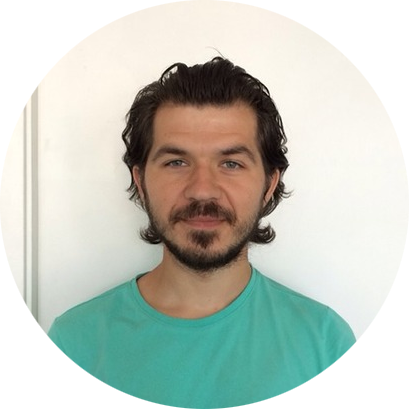
Yevgen Tsvetukhin
Product Manager at Mailtrap
Customer profile is very, very important. Find the people who will be paying for your product. Otherwise, you’ll waste resources making features for forever-free users.
Prepare the questions
Not all questions allow you to get insight that interviewees have deep in their minds. The questions you ask should work as guidance for your conversations, not the limits. Here are some experts’ tips on making your conversation a real heart-to-heart.
- Ask only open-ended questions that would allow people to contemplate on answers, not to choose the correct option.
- Base questions on hypotheses you need to validate. Ask about things you’re most unsure of.
- Cross out all leading questions. You want to hear the truth, not the reflection of your ideas.
- Don’t ask theoretical questions or questions about a person’s future. You need to gather only facts, so ask questions about their real past experiences.
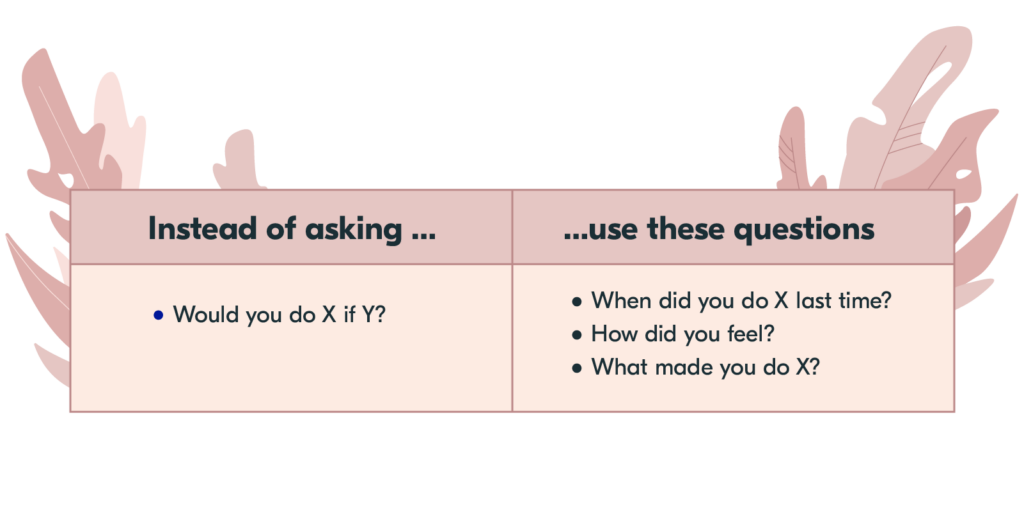
Prepare the equipment
The main rule in Customer Development interviews is recording. Of course, you can take notes during your conversation, but when writing or typing quickly, you may want to shorten and edit the exact words. Don’t do that. You’ll need these phrases in their original form (later, we’ll explain why). So take the recording equipment you like and make sure it works well.
Before inviting a person, inform them about recording and ensure they are okay with it.
Create the research doc
In this doc (can be an Excel file), you’ll copy the answers of your interviewees to analyze them and find patterns. Here’s how it may look.
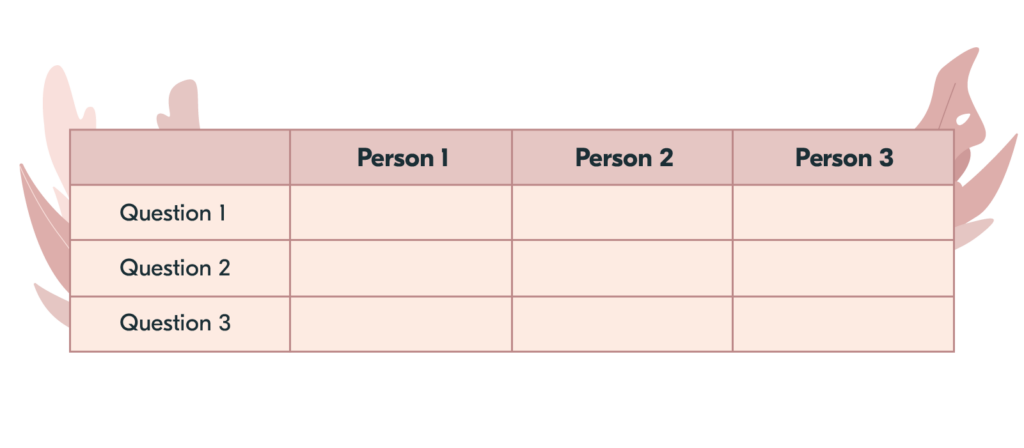
Things to know/do during an interview
Find a perfect interviewer or become one
When taking an interview, don’t let yourself be emotional. Your responses should be neutral. Don’t let your intonation show what you want to hear from an interviewee. And try to talk less. Don’t fill in the silence, let them do it.
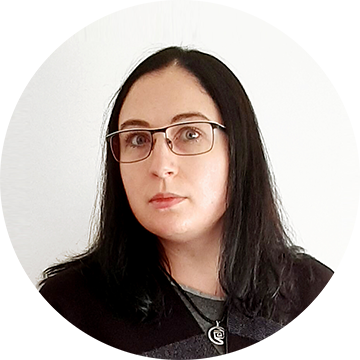
Julia Romanenkova
Product Manager
Start properly
The art of conversation relies heavily on empathy and listening skills. Your interviewee should feel comfortable and secure from the first minutes of your meeting or call. Make the person feel like a contributor, not a student passing an exam. Don’t make it formal, and don’t follow a strict order of questions. Dive deeper where needed because what is on the surface is usually not an insight. Let your conversation flow freely.
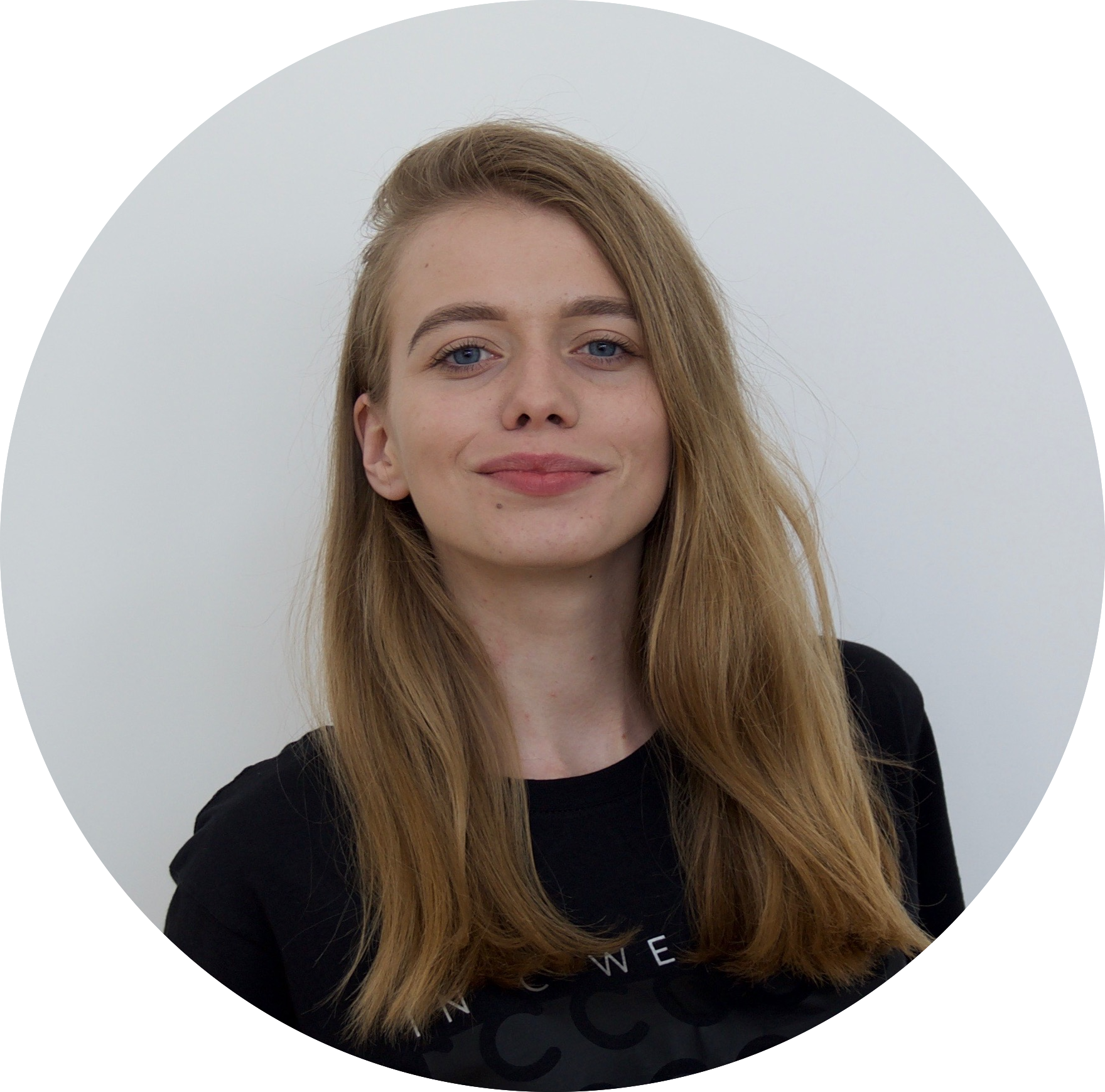
Olia Ududiak
People Team Manager
At the beginning, we explain the purpose of the call and how to answer questions. We also make sure to mention that this information is not shared with anyone outside our team. Our main goal at this point is to create a nice conversation with laughter and people expressing their thoughts freely.
Focus on a person
This interview is about people, their problems, perception, and needs. Let them talk about their lives first and later about how and if your product can help or fit in.
Have no expectations
Be ready to hear things that can destroy your theories. Yes, it might be frustrating, but spending a load of money on an unworthy product is worse. Besides, during these interviews, you can discover even better opportunities for your business.
Change the target group (if needed)
If at interviews you receive very different answers, don’t get any relevant insights, or don’t see the pattern – most likely, this means you’ve chosen the wrong target group of interviewees. Get back to your audience criteria and rework them before you misinterpret the interview results.
Thank a person
Even if you paid for the interview, you should still be grateful for the person’s time and information. Remember, they are doing you a favor!
Things to know/do after an interview
Process the answers
Listen to an interview or read the transcript. Make some notes on your findings and insights. Then copy the answers into a doc you created before and compare them with other people’s responses. Can you see some patterns already?
At Railsware, we often use the RICE approach to prioritize needs, features, or improvements we discovered during the interviews. You can choose another convenient method to prioritize the collected insights into a product roadmap.
Correct your questions
Checking your question list after each interview allows you to make every new session even more productive and insightful.
Correct your hypotheses or build new ones
When interviews are over, get back to the assumptions you were trying to check. Were your guesses right? Did you get any insights that can strengthen your product or strategy? Can you improve your product or strategy or make up a better one using the answers?
How Railsware leverages the Customer Development approach
As we mentioned, our team often uses Customer Development for different purposes. Here are just a few examples.
To check if a product idea is feasible
Pool cleaning app
Before diving into the product creation process, we always check if the idea is worth the resources and if there will be a market for it. The concept of the pool cleaning app was to collect applications from everyone who needs pool cleaning in a neighborhood and make one corporate order to a service provider.
We initiated interviews with the service providers and private house owners who regularly ordered pool cleaning services. The interviews showed that the perfect solution for those people would be a public chat with notification and poll features. There are many messaging apps with such functionality, so the client decided not to start a new app development process.
To shape the product vision
Trip planning app
Before a product discovery session for the trip planning app, our client’s team ran Customer Development interviews with passionate travelers to find out how they were looking for inspiration for their future trips and how they actually planned them. The conversation wasn’t about the app idea and whether interviewees would use it. It was only about the past experiences people had and how they used to fulfill their needs.
When processing interviewees’ answers, we made a list of tools, such as Whatsapp, Google Docs, Email, Pinterest, Instagram, etc., and activities those travelers usually did to plan their trips. Thus, we made a feature list necessary for the product. It included the ability to store and share social media data, chat, follow to-do lists, and more.
To validate prototypes
Medical records app
The idea of the medical records app that we worked on was to help people with medical conditions (or their family members) easily track all the medical records, notes on upcoming appointments, and other related information in one place.
The app founder, who has been working in healthcare for many years, already had a network of people who agreed to participate in Customer Development interviews. During the call, people talked about the current solutions they use, their needs, and habits. Processing the answers, the client’s team found out that the target audience mainly relied on Google Calendar (to remember about arranged meetings), notebooks (to keep all the records and to-do lists), Google docs, etc. After analyzing the collected information, they drafted version 1 of the product. Later, when our team joined the project, we used that V1 to shape and create a product prototype. Together with the client, we ran a series of Customer Development interviews to validate the prototype and map the next steps.
Seedtime
Paul Dysinger is a passionate gardener who has been sharing knowledge about this craft for years. When the idea to create a convenient, customizable garden planning app came to Paul’s mind, he already had a loyal community of gardeners. This fact simplified the process of selecting interviewees to participate in Customer Development sessions and assist him with shaping the product vision.
When we joined the team, Paul already had an Alpha version of the product which we used during the Customer Development interviews. We asked people from Paul’s community to do some activities to check if the flows were obvious and workable. When working on the UX and UI of the product, we also ran short interviews to check if the labels and copies were crystal clear to avoid ambiguity in terminology.
To improve the UX/UI of an existing product
Mailtrap
Mailtrap is an email-sending platform that we constantly improve and grow in collaboration with our users. When our customers have suggestions or complaints, we always listen to them.
Some time ago, we received a few users’ complaints on our billing system and pricing page. The users reported that the copies were a bit confusing. We initiated the Customer Development interviews with them and did a couple more interviews to confirm the main problem wasn’t a solitary case. During the interviews, we detected the issue and later fixed it.
I remember after interviewing about ten users, we made a list of 60 potential improvements to the product UI. Customer Development interview helps us understand what users really think about our product, improve its functionality and design, and build future roadmap using the collected insights.

Yevgen Tsvetukhin
Product Manager at Mailtrap
At Railsware, we believe that constant product improvement is the key to its success. Read all the details on how we improve our products in this comprehensive guide.
To grow a product
The Lean development approach teaches us to listen to our users and react to their needs. However, developing a new functionality after a first demand is risky. At Railsware, we heavily rely on support requests but always validate all the assumptions using the Customer Development approach.
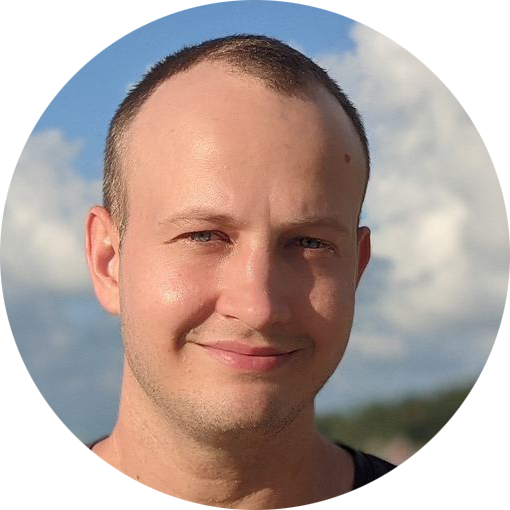
Oleksii Ianchuk
Product Manager at Mailtrap
First, we analyze who sent the request and how many of them we got. If the request is from a non-paying user, it’ll have lover priority. Next, we check the frequency of the same requests. Similar frequent requests show us demand and form a hypothesis we’ll check on interviews with our customers. After the conversations, we confirm the needs of our users and prioritize the product roadmap.
To tackle the recruiting process
If you need to understand the context of a problem, there’s no better way than to have an interview with a knowledge holder. Our Recruitment Team sticks to this strategy when opening a new destination for hiring.
When we hire someone from a new destination, we ask about the specifics of that country and culture. We want to know more about the hiring process in this location, so we ask about vacancy posting resources we can use, communities we can reach out to, and many other details, like preferable language, popular media, work ethics, etc.Usually, one person helps us to hire more people in the same location.

Olia Ududiak
People Team Manager
To shape employer branding strategy
Railswarians often participate in Customer Development sessions as interviewees.
For instance, we run Customer Development interviews after a newcomer has passed the trial and worked for a few months. During these sessions, we ask Railswarians about their past job experiences, and aspects that are most important for them and their careers. The insights we get after such sessions are then used in social media marketing, vacancy descriptions, advertising, etc. Basically, we attract new hires by highlighting the aspects Railswarians appreciate in the team the most.
Also, we interview people who leave the team. We believe that knowing why it didn’t work out will help us improve the hiring process and many operations within the team.

Olia Ududiak
People Team Manager
I believe Customer Development should not only be used in Product Management but by all other professionals too. It is a simple tool to get answers to your questions and make a data-driven, well-informed, and people-centered decision in the end. Besides that, it’s really enjoyable to do as the insights you get from different people are usually quite interesting and eye-opening.
Wrapping up
Thousands of startups appear every day dreaming of Uber or Airbnb’s popularity. Some of them copy existing solutions entirely, and some try to improve those product ideas. However, most of them forget about the main reason for startup failure – people may not need them. The only way to create a truly useful product is to keep a constant connection with your audience, testing all your hypotheses, and tuning your solution to its needs and desires. At Railsware, we use Customer Development for this. We’ve seen the great power of this approach first hand so we recommend it to your startup.